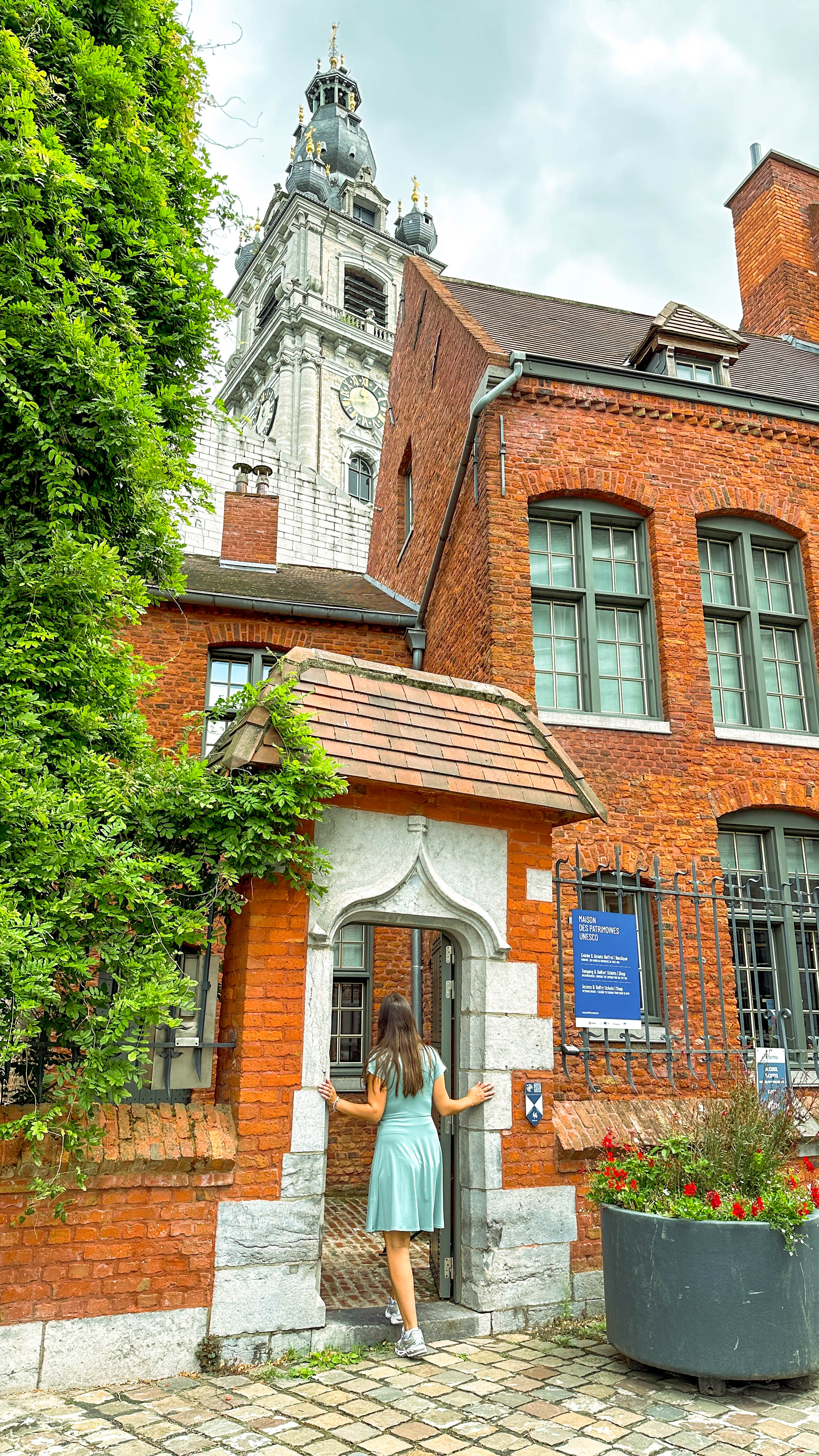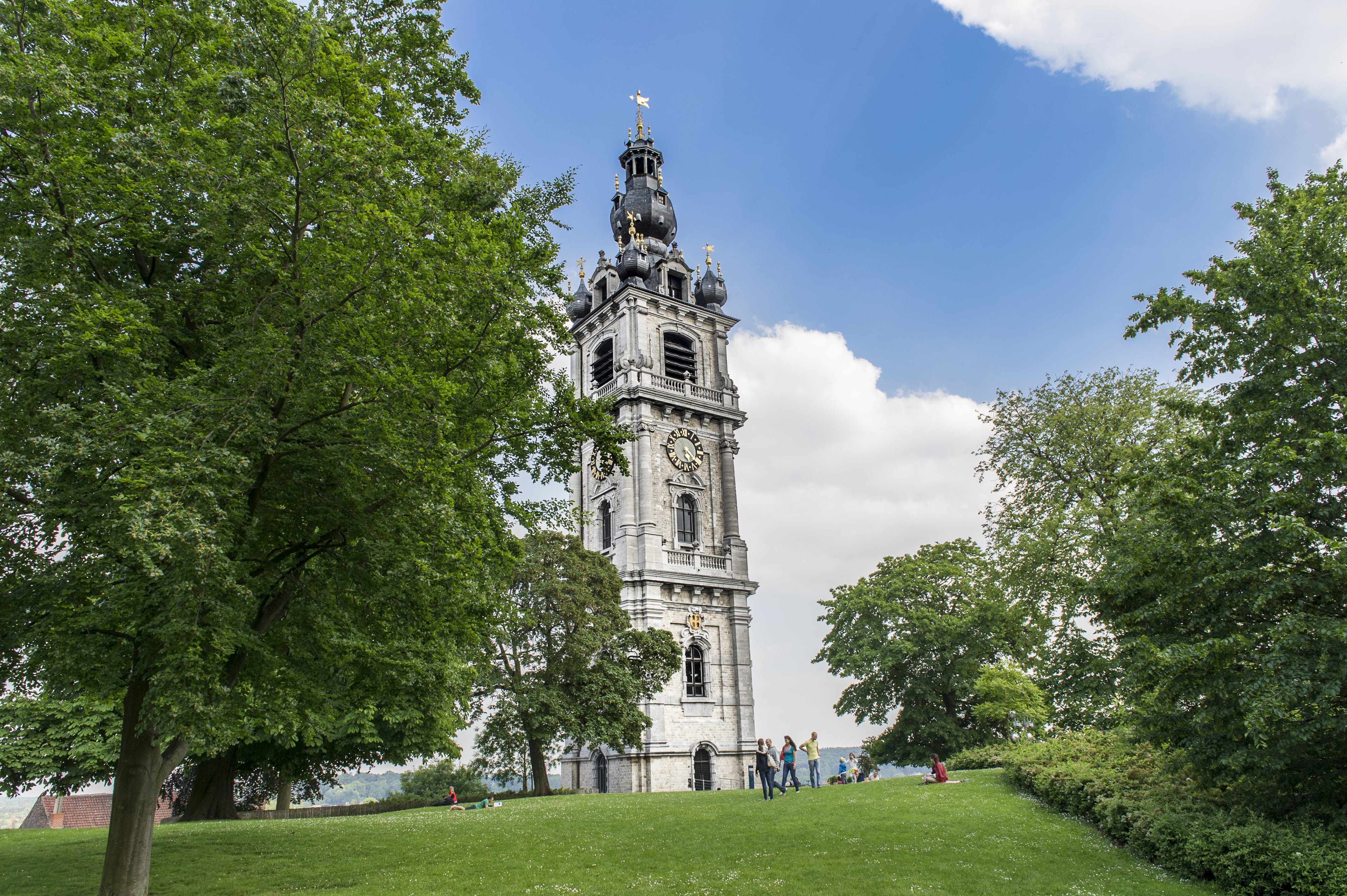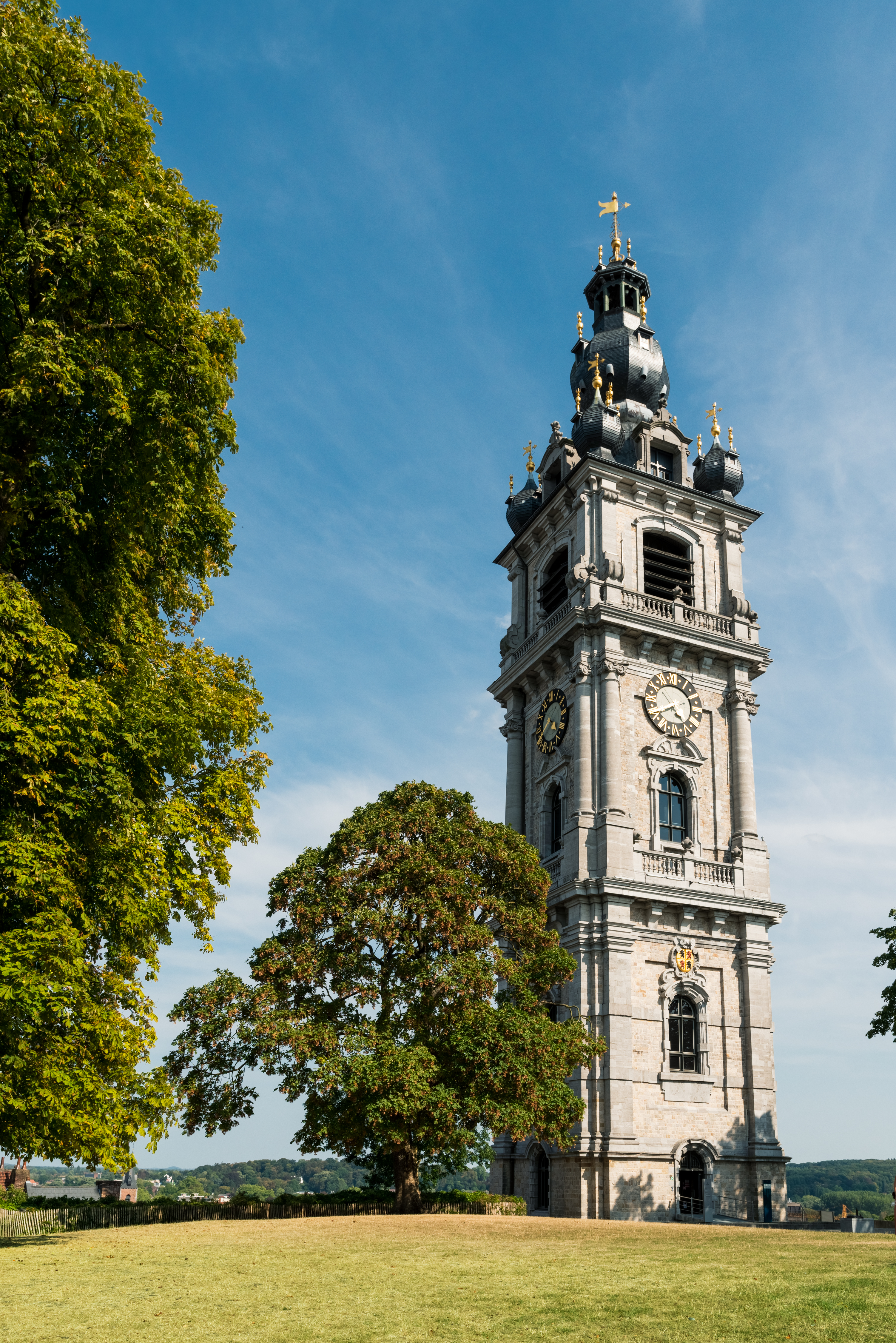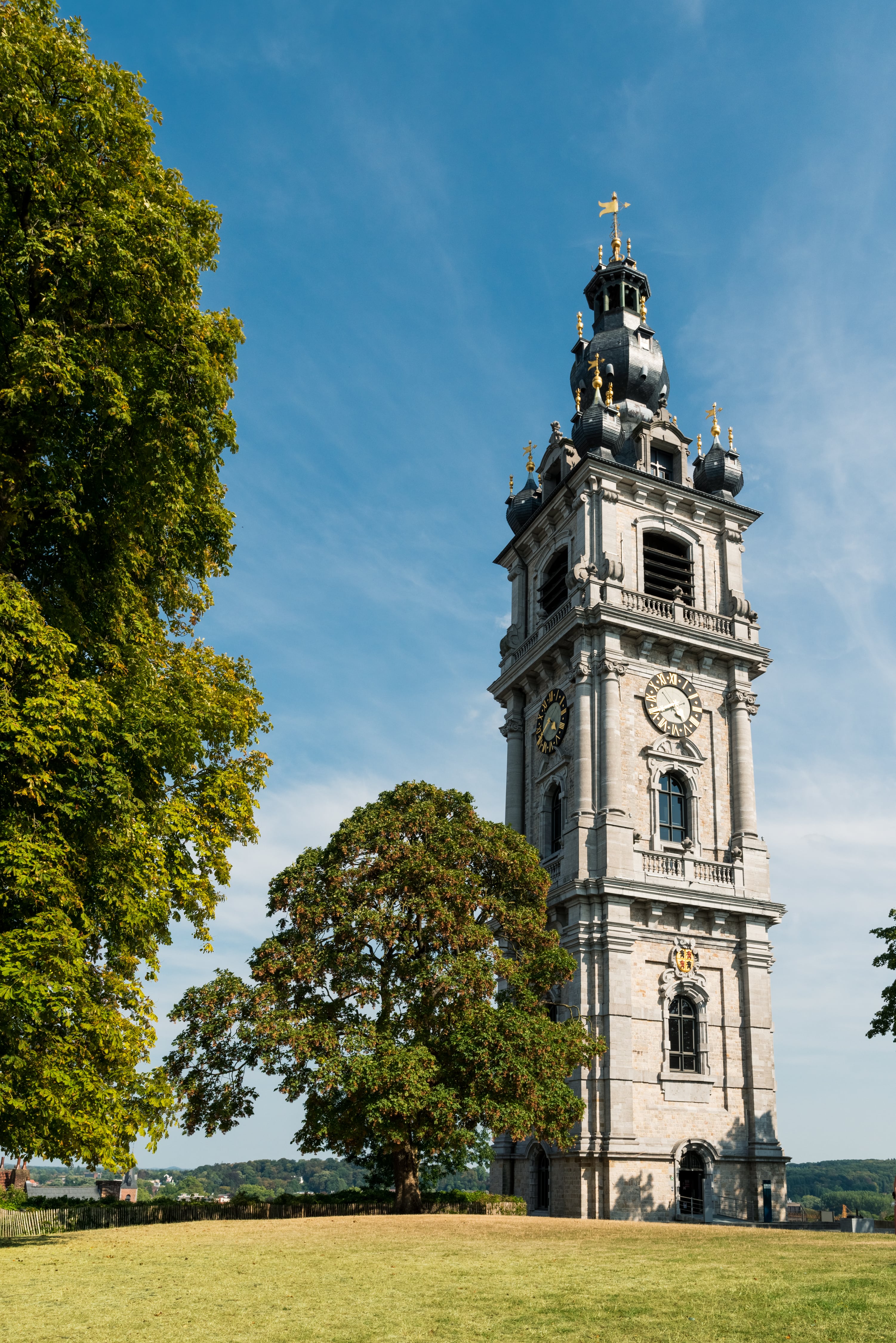 Chris Chevalier
Chris ChevalierThe Belfry site
The Belfry of Mons
In 1999, the Belfry was added to the World Heritage List along with other Belfries from Flanders and Wallonia.
Built between 1661 and 1672 by Louis Ledoux and Vincent Anthony, the building is characterized by a sober Baroque style with classical decorations and distinctive bulbous domes. The Belfry of Mons is the only Baroque Belfry recognized by UNESCO.
The Belfry site is to be discovered in three stages: The UNESCO Heritage House (reception and ticket office), the park, and the Belfry.
A unique place!
To be discovered in 3 stages
The Belfry
Victor Hugo was not fond of it: "a huge coffee pot, flanked below the belly by four smaller teapots," wrote the giant of French literature to his wife Adèle during his visit to Mons in 1837. Yet one thing still caught the writer’s attention: the grandeur of the building.
And indeed, this belfry is grand. Grand in size (87 meters), grand in history – having withstood wars and epidemics for centuries without ever faltering – and grand in its presence. As the only baroque-style belfry in Belgium, the monument in Mons commands respect. Since the late 1660s, it has stood proudly in the garden of the Counts of Hainaut, watching over the city. For a long time, it warned residents of impending dangers: fires, invasions, bombings... Today, it still marks the rhythm of life in Mons with its 49-bell carillon.
UNESCO Recognition
Since 1999, fifty-six belfries in Belgium and France have been listed as UNESCO World Heritage Sites under the name "Belfries of Belgium and France." To be included on the World Heritage List, sites must have outstanding universal value and meet at least one of the ten selection criteria set by UNESCO. These criteria are regularly revised by the Committee to align with the evolving concept of world heritage. The Belfry of Mons was added to this prestigious list based on the following two criteria:
- Criterion (ii): Demonstrating a significant exchange of influences over a given period or within a defined cultural area in the development of architecture or technology, monumental arts, town planning, or landscape creation.
- Criterion (iv): Providing an outstanding example of a type of building, architectural or technological ensemble, or landscape that illustrates one or more significant periods in human history.
To preserve this site and pass it on to future generations, a UNESCO management plan was drafted in 2011, approved by the municipal council, the CWAPAM2 at the Walloon level, and submitted to UNESCO.




